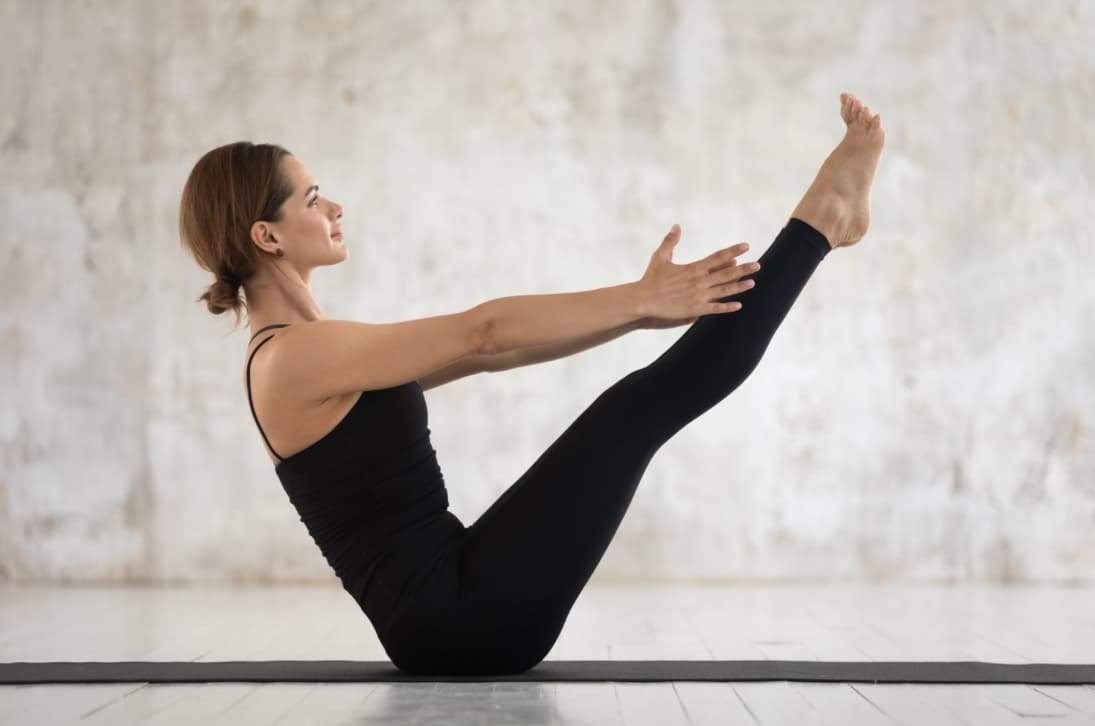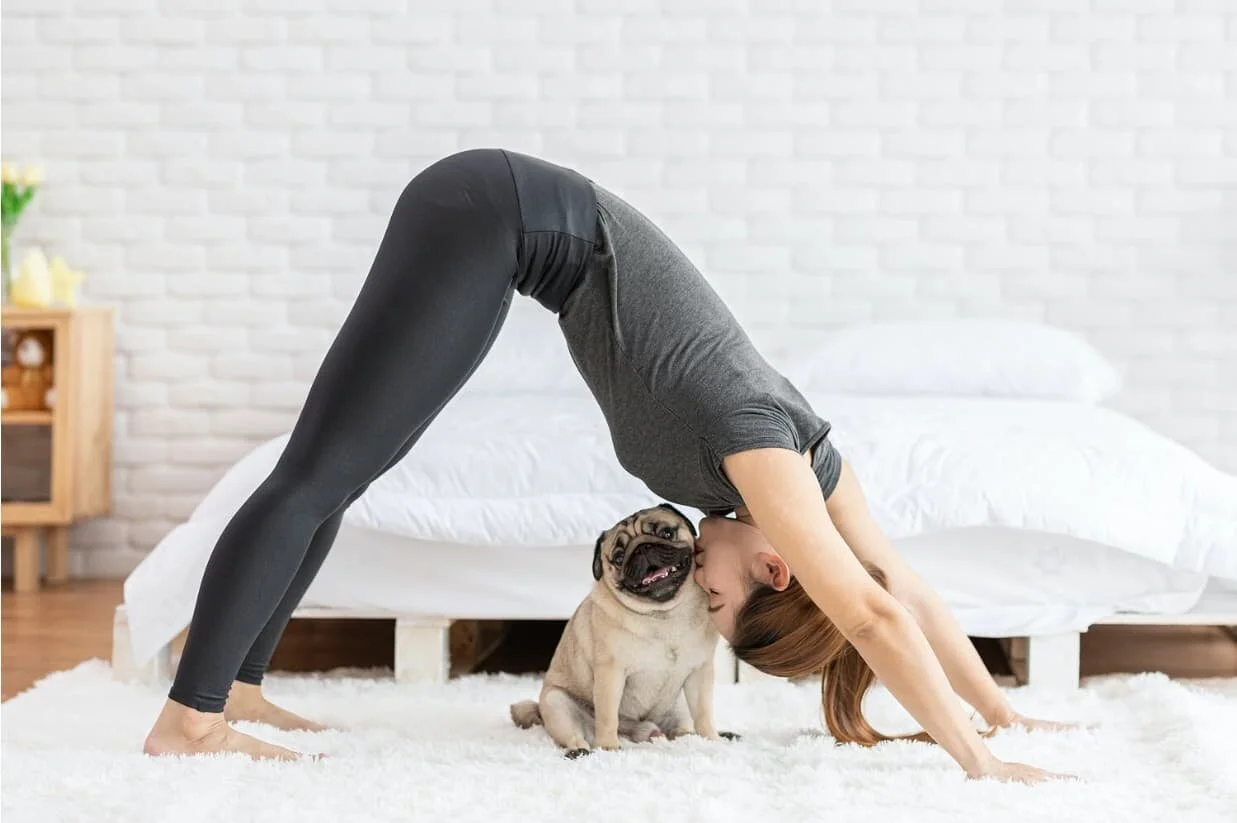Can Yoga Be Self-Taught? How To Learn Yoga On Your Own
By: Shannon Sweeney
Yoga is an ancient and spiritual practice, full of complexities and nuances that can take a lifetime to master. But if you’re not on a mission to become a yogi, it’s entirely possible to learn about yoga on your own and cultivate a regular routine that works in all of the ways you need it to. But even though yoga is great for relaxation, it is a physical activity and so, like any exercise routine, you should run it by your doctor before you start.
Find Your Style
Yoga has so many uses and benefits that you really can’t go wrong, but with multiple different types of yoga, to choose from, it helps to know what you want in order to to start in the right place. For instance, if you’re feeling tired, you’ll want to do a restorative yoga sequence, whereas if you’re feeling energetic and want more of a workout, try a fast-flowing sequence (like Vinyasa) with harder poses and a slightly faster pace.
To figure out what you’re after, ask yourself some important questions about what you’re hoping to get from yoga. Do you need a morning yoga routine to start your day more grounded and focused? Do you need a way to unwind at night before bed? Do you need to focus on a specific problem like back pain or belly bloat? Do you want to use yoga as a workout or a way to get in shape? Or are you more drawn to the spiritual side of yoga? All of these are great reasons to start doing yoga and the beauty of the internet is that you can find plenty of resources to do all of these things.
Find Your Guide
Start out by searching combos of your skill level, time or duration and desired experience. For example “beginners yoga 20 minutes for back pain”. You’ll come across instructions both written and visual to help guide you, but your best option is to use a combination of both. If you’re just watching demonstrations of individual poses, trying to replicate what you see, you may miss important cues about breathing, muscle engagement and mental visualizations.
So look for videos created specifically for beginners that talk you through exactly what you should be doing and when. Watch them all the way through before you try to follow along. After you find a routine you like, do a little homework by reading up on the poses you did. It’s easy enough to watch a video and follow a routine, but if you really want to learn yoga then it’s important to develop a deeper understanding of what you’re doing, why you’re doing it and how it connects to your breath and your body.
There are many different styles of yoga and even more poses — so what’s best for you? When you’re learning to do yoga at home, be open to different types of poses, take notes on favorite styles, poses and video instructors. Here are just a few options to help you get started.
30 min Beginner Yoga - Full Body Yoga for Strength and Flexibility
Easy 10 Minute Bedtime Yoga Routine in Bed for Total Beginners
If your idea of “on your own” just means without taking in-person classes, take a look at a fitness subscription like Openfit or Livekick that feature group or personal, interactive streaming classes. Get the details on Openfit with our Openfit Review or go straight for the free trials so you can experiment with formats and instructors to find what you like, before you start paying.
Practice in a quiet area
The environment plays a huge role in your yoga session. Make sure you have a quiet area in your home where you can fully commit to your workout. Most beginner videos don’t require you to have much in terms of equipment, but if you have a yoga mat grab that, some water, a towel, or whatever else you may need before you begin. For an added bonus, consider lighting candles or using aromatherapy to help you relax and fully get into your space and your movements.
Practice the Breathing Techniques
Say hello to pranayama - the practice of breath control in yoga. While this process helps synchronize breathing with movements between asanas, it is also a distinct breathing exercise on its own. Because yoga requires thoughtful attention to breathing, and sometimes you have to remind yourself to breathe and not hold your breath, especially during more challenging poses, getting good at yoga means spending some time on just the breath work. Proper yoga breathing techniques involve breathing through the nostrils using a specific pattern of inhalation, breath retention, and exhalation. It can take some time to master, so put in some effort working on just the breathing skills outside of your routines.
Practice your Routine
Like anything else, teaching yourself yoga requires some commitment and discipline to form a routine. One of the biggest keys to practicing yoga is consistency — just roll out your mat and do it. To help keep a routine, consider going to bed a little earlier so you have extra time in the morning without sacrificing your sleep schedule. Alternatively, you can pick a time during your day if your schedule allows it — like during your lunch break, right after you finish work, or wherever you have some time to yourself. If time is an obstacle then just start with basic, equipment-free 10-minute routines. But like anything, if you’ve never done yoga, be patient with yourself and be careful trying new poses.
Relax with Savasana
Savasana helps your body slowly and completely relax, and it should be part of any at-home yoga routine. It conditions the body to release stress, and it’s easy to do! Simply relax on your mat laying on your back, focusing on your breathing. If you’re following along with a video or guide, breathe along and follow their instructions. This will help your heart rate, blood pressure, and nervous system return to its baseline — and you’ll feel completely rejuvenated afterward. Savasana can be challenging, even for the bendiest of yoga practitioners, because it focuses strictly on relaxation. But with practice it will help you build essential awareness of your body and mind.
Monitor Yourself
Working with a yoga instructor has benefits that are difficult to get on your own, but not completely impossible. In the early days don’t be overly critical of yourself, it’s enough just that you’re making the effort and putting in the time. But as you progress, and get more comfortable with the routines you’re working with, become more analytical of your process. Try recording yourself doing your poses and review the footage afterward like a football player watching game-tapes. This is not to assess how your butt looks in yoga pants, it’s to check your form. Are your wrists aligned with your shoulders when they need to be? Are you lengthening where you need to? Is there anywhere you’re collapsing your weight? In a yoga class an instructor would be able to walk around and help correct these things. On your own, you’ll need to be a bit more creative to get an external perspective.
No matter whether you’re looking to jumpstart your day with a yoga flow, or trying to relax at the end of a hard day, with the right resources, practice and patience you can learn yoga right from your home and on your own. Namaste!
More Articles You Might Like














There is a lot of good on social media; it’s a place where you can follow along and connect with like-minded individuals who share similar passions with yours. Checkout these 6 killer instagram accounts.